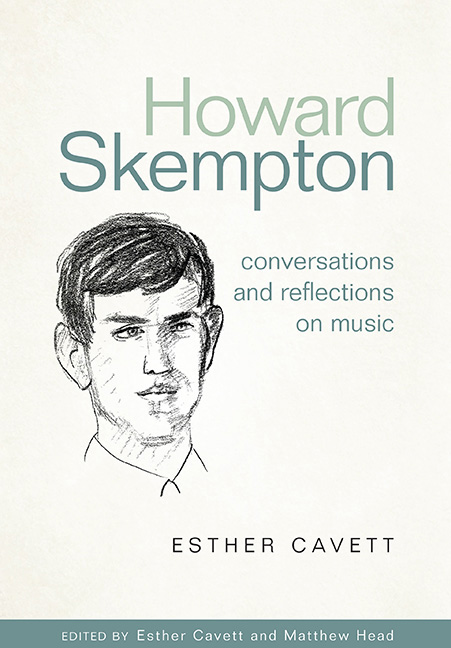Book contents
- Frontmatter
- Dedication
- Contents
- List of illustrations
- List of contributors
- Preface
- Roles and acknowledgements
- Introduction
- Editorial conventions
- Timeline
- Chapter One Histories
- Chapter Two Influences
- Chapter Three Pattern and shape
- Conversation Three: Becoming established, and the music after Lento (1990)
- Reflection Three, “Strangely simple”: Howard Skempton's composing
- Interval: Previously unpublished manuscripts
- Chapter Four Influencing
- Chapter Six Narrative and closure
- Appendix One Authorized worklist
- Appendix Two Discography of first commercially distributed recordings
- Select bibliography
- Index
Conversation Three: Becoming established, and the music after Lento (1990)
from Chapter Three - Pattern and shape
Published online by Cambridge University Press: 10 September 2019
- Frontmatter
- Dedication
- Contents
- List of illustrations
- List of contributors
- Preface
- Roles and acknowledgements
- Introduction
- Editorial conventions
- Timeline
- Chapter One Histories
- Chapter Two Influences
- Chapter Three Pattern and shape
- Conversation Three: Becoming established, and the music after Lento (1990)
- Reflection Three, “Strangely simple”: Howard Skempton's composing
- Interval: Previously unpublished manuscripts
- Chapter Four Influencing
- Chapter Six Narrative and closure
- Appendix One Authorized worklist
- Appendix Two Discography of first commercially distributed recordings
- Select bibliography
- Index
Summary
BECOMING A PROFESSIONAL COMPOSER
HS: What our earlier conversations show, in a way I hadn't quite focused on before, is how completely committed I was from very early on to doing composition. I had an unerring sense of what was what. I never stopped connecting and trying to plug gaps. Without being careerist about it, I sort of steered myself to the position of being a professional composer, but very much on my own terms.
EC: Beyond your internal musical development, what were the practical things which helped this transition?
HS: There was a change of control at the BBC, and John Drummond was in charge from 1987, and so experimental music was being heard again on the radio. John Drummond was very open to what the producers had to offer when he arrived; he gave the producers more permission to talk, even to pop up and say things on their own programmes. He said, “I'm not absolutely sure how things are going to develop, but I want to see what you're doing.” Martin Cotton was one of the producers, and he produced two programmes involving my music. The little Lullaby for clarinet and cello, that I had written in 1983, and Michael Finnissy playing my piano music, along with music by John White and [Cornelius] Cardew and so on. Martin then became the producer of the BBC Symphony Orchestra. And Martin commissioned Lento which I wrote in 1990, though Martin and I would have had lunch together the year or so earlier to discuss it.
I always felt that I want Lullaby to be played at my funeral. I was very happy with that piece. It was an accordion tune, to which I added something like a Bach Prelude, so it was almost like my Ave Maria [2016], you know. I was very happy with it. I'd written Chorales [1980] earlier, but Lullaby exploited that purely melodic aspect which the accordion music had released.
The way I became established involved a chain of events, and Martin Cotton was a crucial link in that chain. Because of my work in publishing and being an experimental composer, I was invited to join the music panel at the Greater London Arts Association.
- Type
- Chapter
- Information
- Howard Skempton: Conversations and Reflections on Music , pp. 69 - 90Publisher: Boydell & BrewerPrint publication year: 2019



